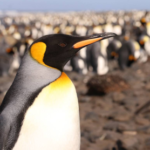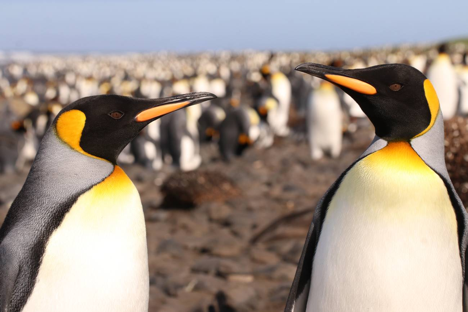 It is only once I started my PhD that I really understood how relative the word “remote” can be. I used to think the cottage house of my childhood was remote, or that my backpack camping expeditions with my father were remote. This was in no way remote, at least not in the eye of a penguin biologist.
It is only once I started my PhD that I really understood how relative the word “remote” can be. I used to think the cottage house of my childhood was remote, or that my backpack camping expeditions with my father were remote. This was in no way remote, at least not in the eye of a penguin biologist.
The King Penguin colony of Ratmanoff is located in the North East of Kerguelen, a French island in the southern Indian Ocean. To get there, you first have to take the plane to La Réunion, a tropical island offshore of Madagascar. From that paradisiac atoll, you board the Marion Dufresne, a large scientific ship and the only mode of transportation to get to the French sub-Antarctic islands. After heading south for seven days (a delightful transit for birders, full of albatrosses, petrels, storm-petrels…), you arrive at Port-aux-Français, a French scientific and military base, and the only inhabited place on the huge island that is Kerguelen, which has a diameter of over 100 km. A long trip you’d say? Well it’s not over! The penguin colony is located 28km from the base, and no roads exist to get there. There are no other options: you have to put your scientific gear and personal stuff on your back and walk for a little over 6h to (finally) arrive at the destination, Ratmanoff, where over 100,000 pairs of King Penguins breed annually.
 Figure 1 The French island of Kerguelen is located in the southern Indian Ocean, a seven-day boat trip from La Réunion | Uwe Dedering | via Wikimedia Commons | ShareAlike 3.0 License
Figure 1 The French island of Kerguelen is located in the southern Indian Ocean, a seven-day boat trip from La Réunion | Uwe Dedering | via Wikimedia Commons | ShareAlike 3.0 License
 Figure 2 King Penguin colony
Figure 2 King Penguin colony
And were it not far enough already, the COVID pandemic adds extra time to the journey. Everything was set for my journey from Canada to Kerguelen in November of 2020, when suddenly France closed its borders, and I could no longer enter the country. After much scrambling and help from many, many people, I was able to get a permit to enter, a little later than expected, and followed by a two-week quarantine at La Réunion.
But why go so far to study King Penguins? The King Penguin colony at Ratmanoff is poorly studied compared to similar ones around the sub-Antarctic ecosystem. Yet, it is one of the largest in the world. It is also located near two important oceanographic systems, both being crucial foraging hotspots for a diversity of vertebrates. Those two systems are also likely to be affected by climate change, with repercussions on all levels of the food web. I will be using a variety of tracking devices, including GPS-accelerometers and temperature sensors to monitor the foraging of the penguins. Studying the penguins at Ratmanoff is very interesting, as they not only use these two hotspots for foraging, but they are also located at the top of the food chain, making them good early indicators sensitive to any changes occurring at lower trophic levels.
 Figure 3 Over 100 000 pairs of King Penguins breed annually at Ratmanoff
Figure 3 Over 100 000 pairs of King Penguins breed annually at Ratmanoff
Thanks to the BOU’s John & Pat Warham studentship, I am able to study the foraging behavior and breeding ecology of King Penguins at Ratmanoff under different climatic conditions. My goal is to examine how variation in the two oceanographic systems affect this emblematic diving bird, and from there, how we can extrapolate the consequences of climate change on the food web of the region. Stay tuned for updates!
Image credit
Top right: King Penguin Aptenodytes patagonicus © Émile Brisson-Curadeau
BOU John & Pat Warham Studentships are funded by a bequest left to the BOU by the late John and Pat Warham for the study of Sphenisciform and Procellariiform seabirds by students from Commonwealth countries. Four fully-funded studentships will be awarded with one studentship awarded per year from 2018.




